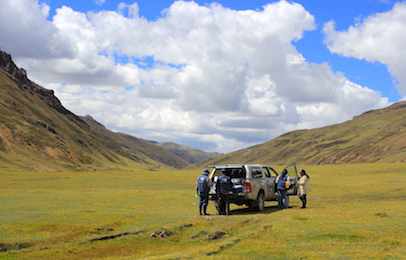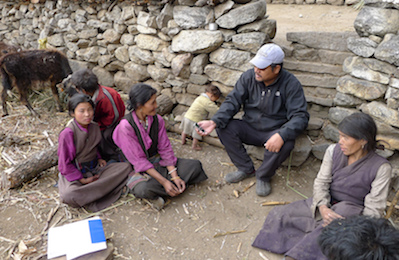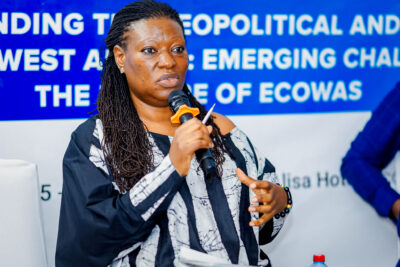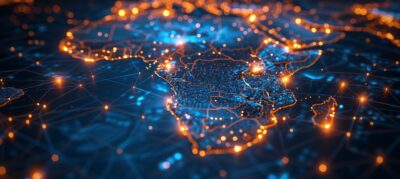Following the devastating events of September 11, 2001 it has become commonplace to hear statements to the effect that the world has become a “riskier” place. However, what do people mean by this statement? And—if we accept that the statement is true—how will it affect the way that people behave? Also, how will it affect ways in which we might or even should behave?
What is risk?
When used in everyday speech, the word risk is typically associated with an activity that involves some chance of incurring a loss or “negative outcome.” Thus, for example, driving an automobile involves risk because, as we all know, accidents can and do happen. Indeed, it is impossible to live without engaging in acts that involve some degree of risk (consider crossing a road or even eating in a restaurant). Moreover, the mere fact of being alive can be thought of as being risky in the sense that there is always some chance that we could suddenly die for a variety of reasons.
From an analytical perspective, the risk of an activity can be thought of as having two components. One is the chance or probability that the negative outcome will occur; the second is the size of the outcome. Generally speaking, the larger the probability and potential loss, the greater the “risk.” Risk can therefore be increased or decreased by taking actions that affect the sizes of the loss and the probability of its occurrence. Thus, for example, you may decrease the risk in driving an automobile by wearing a seatbelt (i.e., the potential loss is smaller than if no seatbelt is worn); or you may increase the risk by driving recklessly (i.e., you increase the probability of an accident).
Conceptually then, it is easy to think about risk. Operationally, however, it is much more difficult. From an analytical perspective, you have to “know” the probability of the loss occurring and the amount of the potential loss. How do people do this?
Risk and insurance
One place to start thinking about how people handle risks is to examine the workings of the insurance industry. This exists because people are willing to pay sums of money or incur sure losses to avoid the chance of incurring larger losses. In other words, one person pays another to avoid having to face a risk. To illustrate, imagine that you have just bought a new computer and are concerned about the possibility of its being stolen. One option open to you is to insure your computer against theft. In other words, by paying a fixed sum of money or premium to an insurance company, the latter undertakes to pay you a larger sum of money (e.g., sufficient to buy a new computer) in the event that your computer is stolen. However, how does the insurance company decide what premium to charge, and how do you decide whether this is reasonable?
For this system to work, the insurance company needs to know the probabilities and amounts of potential losses as well as to have a sufficient number of clients so that the sum of the premiums collected is large enough to pay for any losses that are incurred. In the case of computers, insurance companies typically have extensive data on the frequencies of theft and the amounts of past losses and can therefore price their premiums so that they are not likely to lose money. They also rely on the fact that they are selling insurance to many clients for many different types of risk so that it is unlikely that they will face exceptional losses in all areas of their activities at the same time (i.e., they adopt a portfolio approach whereby they don’t place “all their eggs in the same basket”).
As to consumers (e.g., computer owners), they typically do not have access to the data used by insurance companies but typically rely on “feelings” as to how badly they want the insurance (to be discussed below). In addition, many consumers know that there is a market for insurance in computer theft and that competition between insurance companies can prevent prices from becoming “unfair.” In other words, the consumer can shop around.
Some consumers of insurance, however, can be as well informed as the insurance companies and do collect data about frequencies and amounts of past losses that they can use to evaluate the premiums of insurance companies. Imagine, for example, a large corporation that has thousands of computers. In this case, the customer (the corporation) may well be able to negotiate a special premium with an insurance company or, if it thinks this is still too expensive, decide to accept the risk itself (this is sometimes known as self-insurance).
In short, the insurance market provides a mechanism for quantifying risk that is expressed by the premiums paid to insure against specific risks. However, this mechanism depends heavily on two factors: one is the availability of past data that can be used to assess probabilities and losses; the second is competition between insurance companies that lets customers have some confidence in the level at which premiums are priced.
Conceptually, you could arrange for an insurance contract for a wide variety of different activities and, in fact, this happens. For example, pop singers buy insurance to avoid losses that could occur if their voices were damaged; pianists insure their hands; and so on. Indeed, Lloyd’s of London has made a specialty out of insuring people against the occurrence of many bizarre events. However, if there are no data on which probabilities and losses can be assessed, and few or no companies interested in offering insurance, the assessment of risk is problematic. Moreover, whereas as much daily activity can and is covered by insurance (consider, e.g., life and medical insurance), there is much that is not. This therefore raises the more general issue of how people assess risks in life and particularly when they do not have access to and rely on statistical data.
Handling risk in everyday life
It is important to realize that risk is not a new phenomenon and that dealing with risk is something that humans have done ever since they evolved as a species. From an evolutionary perspective, therefore, one should expect that we would have developed innate mechanisms for handling risk and, in fact, this is true up to a point. The mechanism that we all possess is the emotion of fear and it is illuminating to consider how this works.
Imagine that you are walking down a city street when suddenly you hear the bark of a vicious-sounding dog just behind you. Your immediate and automatic reaction is of one fear, and this is accompanied by an involuntary movement away from the sound of the dog. In other words, fear stimulates an action on your part that helps you remove yourself from the source of danger. In this sense, the emotion of fear and the reaction that it provokes is part of our natural endowment for handling risky situations. Note well, there is no attempt to assess risk from the analytical perspective described above, i.e., estimating the chances that the dog will attack you and the possible physical damage that could result from such an attack. Instead, there is just one simple emotion and reaction that removes you from a “bad” situation.
The point I am making is that we do have “automatic systems” for handling situations that we recognize as risky. Thus, it is important to investigate the origins of these systems and to recognize both their possibilities and limitations.1Hogarth, R. M. (2001). Educating Intuition. Chicago, IL: The University of Chicago Press.
Our ability to recognize dangerous situations and to react in consequence can be thought of as having two sources. One is natural in the sense that it is inherited through evolution; the other is learned. Psychologists have made extensive studies of learning and it is quite clear that many fear reactions are the result of past experiences. Thus, individuals can differ significantly in how they react to different stimuli depending on their idiosyncratic experiences. One person, for example, may be quite afraid when flying in an airplane because of previous bad experiences; a second may feel little or no fear. The critical point about learning is that people have either experienced a negative outcome (or “loss”) personally or they have been socialized by others (e.g., a parent) to associate potential losses with certain activities.
It can be safely said that our understanding of how evolution has shaped us to experience fear in the face of specific stimuli is less complete than our understanding of learning. However, our ability to acquire the response of fear is a genetically inherited mechanism. In addition, there is evidence that it takes very little exposure to acquire fear reactions to some stimuli and yet not to others. For example, it takes only one or two exposures for people to acquire a fear of snakes, spiders, and heights and yet, these same people may experience far less fear when crossing a busy intersection in a city (which for them might be objectively more dangerous). It just seems that we are better “prepared” to learn fear reactions from some kinds of stimuli than others. For example, early in the 20th century, the pioneering learning psychologist John B. Watson demonstrated that he could teach in a conditioning experiment an 11-month boy to become afraid of a white rat, a rabbit, and a dog when these were paired with a startling noise. However, an attempt to replicate his experimental procedure failed when conventional objects such as blocks of wood and cloth curtains were paired with the startling noise.
More recently, neuroscientific studies of the brain indicate that people process information concerning fear reactions in two distinct areas. Key to the fast, automatic reactions is the amygdala, a small, peanut-sized organ that lies deep in the back of the brain. The amygdala receives information directly from the sensory thalamus and uses this to initiate evasive action if danger is signaled. This level of processing, however, is approximate in the sense that it does not involve detailed analysis of the impending danger. It acts as a kind of reflex to a class of stimuli. The incoming information, however, will also be processed albeit in a slower and more thorough manner in the neo-cortex at the front of the brain and this will allow a more precise identification of the potential danger and the appropriateness of different actions. This slower processing, however, will typically take place after evasive action has already been enacted (e.g., you took evasive action automatically after hearing the dog’s bark and only afterwards were you able to assess the real risk when you saw from a safe distance that the dog was well secured). Clearly, it is functional for the first system to act quickly even if it is mistaken on occasion. More generally, several researchers believe that our emotional decision making systems that work without our conscious awareness are tuned through experience to pick up “markers” or signals of potential danger and that they help us to avoid making the wrong decisions by eliminating dangerous alternatives from consideration.
Risk and past experience. Both evolution and our learning history endow us with fear reactions that can stand us in good stead when we are confronted with potentially dangerous situations. In facing the dangers in today’s world, however, both mechanisms suffer from the same disadvantage. They only provide reactions to situations that have been experienced in the past and cannot handle risks or dangers that are “new.” Indeed, if we rely only on our emotions (whether inherited or learned) to guide our risky decision making, we are liable to suffer many losses.
The sociologist Charles Perrow has (implicitly) made an interesting analysis of this situation from a larger societal perspective. In a book entitled Normal Accidents he makes the point that society typically learns to handle new technologies by responding to breakdowns or “accidents.”2Perrow, C. (1984). Normal Accidents. New York: Basic Books. For example, regulations for fire hazards that involve limiting the number of people who can be present in buildings at the same time were not the result of authorities planning what might happen when many people crowded into the same building. Instead, they are a result of what society learned from past accidents where people died. Similarly, the loads that bridges can take were not always forecast but calculated in light of past experiences; and traffic regulations were implemented incrementally as society gained experience with accidents. Thus, argues Perrow, if society continues to act in the same fashion, accidents will also occur when new technological advances are introduced indeed, they are inevitable or “normal.” Lacking past experience that could signal danger, it is human nature to continue to push the frontier until something happens. As a recent example, consider Concorde, the supersonic jet that flew commercially without a fatal accident for some 25 years. Note that the fact that Concorde was (or is) a safe technology was reinforced on a daily basis for a quarter of a century. However, when an unimagined and life-costing accident did occur after this long accident-free service, the airplane had to undergo substantial modifications of its undercarriage to avoid similar accidents in the future. And yet, for the first 25 years of its service, no fatal accidents had occurred and no one saw the need to introduce the modifications.
It should be clear that, in an increasingly technological and complex society, we cannot rely only on our emotions of fear whether these are determined genetically or environmentally (i.e., the result of experience) to assess risk and find means to deal with it. Instead, people’s assessments of the components of risk (i.e., the chances and the amounts of potential losses) must involve their subjective perceptions of what these are likely to be in the future. In turn, such assessments must depend on imaginary as opposed to “real” experience. And indeed, many studies of risk assessment over the last 30 years have highlighted the role played by imagination. Sometimes, people fail to imagine the possibility of certain risks occurring and so fail to take protective actions (e.g., the Concorde example, given above). On other occasions, people’s imagination may lead them to believe that risks are greater than more objective analysis might show. In both cases, the way in which people acquire and process the information on which their assessments are based can have important impacts on their beliefs.
In the final analysis, then, people’s assessments of risk depend on both their experience with situations that are similar to those they are currently facing and particularly their feelings towards those situations and their imagination of what the future might hold. In the case of insurance companies dealing with everyday events such as theft and general life insurance, it is clear that they are able to quantify their experience with all the data that are available to them. But individuals who face risk and for whom data might not be available are obliged to use their imagination, which, as it turns out, can be affected by many factors.
Risk and imagination. One way to characterize people’s assessments of risk is to explore what affects their imagination of risky events occurring. At a rough approximation and holding size of negative outcomes constant the more easy it is for people to imagine a risky event happening, the more likely they are to perceive it as risky. What then affects people’s imaginations?
Let’s start with risks that people don’t imagine and which therefore do not represent risks from their point of view. There are many of these in everyday life. For example (and as noted earlier), each time you walk down a street you could have an accident. However, the possibility of accidents such as these rarely comes to the attention of a fit, able person. In a sense, these accidents fall below the threshold of imagination and thus worry. Second, there are many activities where people feel “in control” and thus do not see the risks in the same way as others might. For example, when considering their ability in driving automobiles (and thus their propensity not to have accidents), most people consider themselves to be well “above average.” Similarly, many business people do not consider that they are engaged in risky decision making because, not only are they in control of what they are doing, they are also experienced.3Shapira, Z. (1995). Risk Taking: A Managerial Perspective. New York: Russell Sage Foundation. Finally, there are many decisions where people do not experience any immediate negative feedback from taking risky actions and thus may fail to see the link between what they do now and what happens in the future. For example, the effects of eating foods with high levels of cholesterol or smoking are delayed in time. In both cases, the activities are pleasurable and negative consequences will not be experienced until much later. In fact, even if people “know” about the negative effects of tobacco and cholesterol, neither of these has much meaning to them if the consequences occur in a distant future with which they cannot identify.
There are many ways in which events can become easier to imagine and thus be perceived as more risky. First, consider the difference between describing the risk of an event in terms of statistics or stories. For example, one can describe how certain behavior can lead to a disease by factually presenting statistics, e.g., specific activities increase the chances of contracting an unpleasant disease from .001 to .002. Alternatively, you could describe in detail how someone contracted the disease and its consequences for the person. Moreover, when the person described is relevant to the audience, the impact of the description will be greater than the statistics. Second, the manner in which statistics are presented can have further effects. For example, in one study, experienced forensic psychologists were asked to assess the risk of allowing a patient to be discharged from a mental hospital after being provided with data about similar past cases. Data presented in different formats produced quite different results. When the rate of past recidivism was presented in frequencies (i.e., 20 out of 100), 41 percent refused to discharge the patient. When it was presented in probabilistic form (i.e., a 20 percent chance), only 21 percent refused.4Slovic, P., Monahan, J., & MacGregor, D. G. (2000). Violence risk assessment and risk communication: The effect of using actual cases, providing instruction, and employing probability versus frequency formats, Law and Human Behavior, 24, 271-296.
A further example highlights how making the description of an event very specific can induce people to see it as much more risky. In an investigation of the effects of wording on people’s intentions to buy insurance for air travel, researchers found that that people were willing to pay more for a policy that would insure them against “terrorist acts” as opposed to death from “all possible causes.”5Johnson, E. J., Hershey, J., Meszaros, J., & Kunreuther, H. (1993). Framing, probability distortions, and insurance decisions. Journal of Risk and Uncertainty, 7, 35-51. And yet, as must be obvious to the reader, death from terrorist acts is only one of many ways that could lead to death on an airplane. However, because this scenario was made explicit, it became more salient to people thereby increasing their perception of the risk as measured by their willingness to pay an insurance premium.
Following a series of extensive investigations over more than 20 years into how people perceive the risk associated with new technologies, psychologist Paul Slovic and his colleagues have determined two important dimensions. One they call dread and the other risk of the unknown.6Peters, E., & Slovic, P. (1996). The role of affect and worldviews as orienting dispositions in the perception and and acceptance of nuclear power. Journal of Applied Social Psychology, 26, 1427-1453. The former includes feelings of fear, lack of control and apprehension about catastrophic potential. The latter refers to lack of knowledge of the risk that could be unobservable, novel, and possibly have important delayed effects. Clearly, one could argue that with good information, people might be able to understand the risks better; however, this alone would not necessarily help people overcome their fear.
A related issue is whether people’s concerns about one source of risk affects their attitudes toward other sources. For example, imagine that you have been sensitized to risk in one area of your life, e.g., you are concerned about the outcome of a medical treatment. Will this affect how you view risks in other areas? The evidence suggests that it will. People’s assessments of risk have been found to be affected by their general emotional state, e.g., if you are scared, you are likely to see risks as generally greater than if you are not.7Loewenstein, G. F., Weber, E. U., Hsee, C. K., & Welch, N. (2001). Risk as feelings. Psychological Bulletin, 127 (2), 267-286. As a further example, the recent attacks involving anthrax were seen by the general public to signal far greater risk precisely because of their temporal proximity to September 11. However, there is now considerable doubt as to whether the same terrorist organization was responsible for both September 11 and the letters contaminated by anthrax.
To summarize, I have argued that risk involves some chance of a negative or bad outcome occurring. The extent of risk therefore depends on both the size of the probability of the event occurring and the size of the negative outcome. In dealing with many risks, however, people (and even insurance companies) do not have access to data that allows them to assess and calculate risks in a rational manner. They therefore rely on more tacit or intuitive ways of dealing with risk that involve feelings or emotions; in addition, imagination plays an important role. Tacit or intuitive knowledge, however, is limited by past experience and imagination may be insufficient or unrealistic. In addition, both can be affected by the context of immediate experience that may or may not be relevant to the issues at hand.
Implications for the aftermath of September 11
Let me now return to the aftermath of September 11 and address some specific issues. How have the terrorist attacks affected the way that we experience and assess risk? Second, how will these affect insurance markets? And third, should we believe that the world has become more risky and, if so, should we change our behavior?
To answer the first question, it should be quite clear that the terrorist attacks have not affected the way that we experience and assess risk. However, what the unforgettable television images have undoubtedly done is to increase our awareness of the possibility of terrorist attacks and the nightmarish quality of potential outcomes. At the same time, we the general public have become much more knowledgeable about the way terrorists networks operate, the effects of religious fundamentalism, and the limit to which fanatics are prepared to go in order to achieve their goals. For example, although most Westerners were aware of suicide bombers, the idea of killing oneself for a religious cause is not part of our way of seeing the world. September 11 helped us understand that we have a very small worldview.
From the viewpoint of understanding risk, what September 11 highlights is the two-edged nature of knowledge. On the one hand, if we are unaware of certain possibilities i.e., we cannot even imagine them we clearly cannot regard these events as risky. However, if we do gain some knowledge of their possibility, our awareness leads to feelings of risk even though, from an objective viewpoint, there may be no difference in the world except for our awareness. Moreover, if this knowledge is imperfect, and we know it is imperfect, then our assessment of the risk could well be biased by a number of different, unknown factors.
At the individual level, one could argue that the fact that one person has become aware of a risk may not be of great importance. However and this is one of the critical factors of September 11 when many people become aware of a risk, the implications are quite different. A classic illustration can be provided by what happens in certain kinds of bank failures. If one person senses a risk that a bank will fail and so withdraws his or her funds, this would typically have little effect on the bank. However, if that person communicates that feeling to others, and they to others, soon so many people will want to withdraw their funds that they will in fact bring about the failure of the bank. Panics can sometimes be instigated by totally erroneous information. People, it should be remembered, are social animals and much of what we know including information about what is and what is not risky comes from social interaction. Thus, a critical part of managing situations such as the aftermath of September 11 depends on whether people can trust what they are told by government officials. If we cannot believe what the government says, our general sense of risk is accentuated.
As to the insurance markets, there are a number of effects. First, the destruction of property and lives by the terrorists was huge. Moreover, it would be fair to state that all the property (or at least almost all) was insured against all kinds of calamities and many claims have also probably been made in terms of life insurance, medical claims, loss of earnings, the ability of firms to operate, and so on. Thus in the short term, insurance companies will have to pay out huge sums of money. In fact, it has been reported that the claims being submitted to Lloyd’s of London represent the largest single loss in its venerable 300-year history and special facilities may have to be extended to Lloyd’s in order for payments to be made on time. Second, despite the short-term difficulties of meeting the payments attributable to September 11, prospects for insurance as an industry now seem quite optimistic. For example, two months after September 11, the stock price of the large German insurance group Allianz had risen 31%; the price of its large French competitor, Axa, had risen 44%. In other words, investors believe that, following September 11, insurance is a good business.
Why should investors believe that an industry that has just suffered huge losses is going to do exceptionally well in the future? The answer can be found in our previous discussion. First, the effect of September 11 is to increase people’s perception of the level of general uncertainty in the world and their imagination of the kinds of negative events that could occur. This uncertainty, in turn, engenders a desire to take actions that can reduce the uncertainty. Many kinds of actions are possible. For example, one can avoid taking airplane flights and thereby reduce some obvious risks. (Indeed, in the month of October, major US air carriers reported reductions of between 25% and 33% in passenger traffic.) People can also take out insurance to protect themselves from many different kinds of potential losses, e.g., destruction of homes, the need for medical treatment, and so on. They may also decide that, in light of recent events, their current insurance coverage is insufficient and that they need to protect themselves against larger potential losses. In other words, one major effect of September 11 has been to increase the demand for insurance. And, when demand for a product increases, suppliers (in this case insurance companies) can be more selective with their customers and also increase prices.
However, there is another reason why insurance companies are increasing prices and this also relates to increased uncertainty. Simply stated, before September 11 insurance companies had never faced such a devastating loss. Moreover, this one loss makes an approach to assessing risk based on looking at past data somewhat anomalous. The past data approach works only when you are dealing with many relatively small losses over time that occur in a way that allows premiums to be calculated in a straightforward way (see above). However, catastrophes like September 11 send a signal that the world might have changed and that the kinds of losses that will occur in the future may be different from what happened in the past. In assessing the chances of losses, therefore, insurance companies consider that the estimates they make are clouded by ambiguity. For the long term, they might believe that the pattern of losses will not really change; however, in the short to medium term they will demand larger premiums to take on risks. In short, insurance companies and those who invest in them can see a future in which there will be greater demand for insurance and at higher prices. Moreover, provided that the industry is not hit with a series of catastrophic losses in the short term, expectations of a profitable future might well be rational.
But, has the world really become a more risky place in which to live and should we change our behavior in consequence? As noted above, it is clear that we are now aware of more sources of risk than we were in the past. However, if it were possible to establish an objective measure of risk, I believe that an argument could be made that the world might even have become a less risky environment. The reason is that since September 11 society has started taking actions that reduce risk. For example, security at airports although far from perfect has been increased; emergency planning and procedures have been established in many public locations; there has been a heightened state of surveillance in many public services; and so on. Paradoxically, the mere existence of these measures can also accentuate the perception of risks of which we were previously unaware. I could, of course, be quite wrong in the sense that none of these measures are sufficient to overcome the increased risks that terrorist groups are willing to impose on society. In other words, assessing the “real” level of risk is quite complex because it depends on the actions taken by many different parties.
We can also ask whether the world is a more risky environment than it was, say, 100 years ago. When we think of all the dangers of modern technology, most people’s immediate reaction is to say that it is more risky or dangerous. Humans possess the means to impose massive destruction and we cannot necessarily control who has and does not have access to such weapons. On the other hand, life expectancy has increased dramatically over the last century and, on this basis alone, one could argue that the world has become a lot safer. What has changed, however, is the nature of the risks that we now face.
To conclude, I do not believe that people should curtail their normal activities because of the events of September 11. On the other hand, like any other risks that we have learned to deal with in the past, we should accept and adapt to public safety measures and exercise appropriate caution. This, in turn, implies listening to our feelings and emotions but also investing in imagination. However, to do the latter effectively, we need to become much better informed about social and economic conditions in different geographical regions as well as different worldviews. The greatest risks that we can all work to reduce are those induced by poverty, ignorance, and prejudice.












